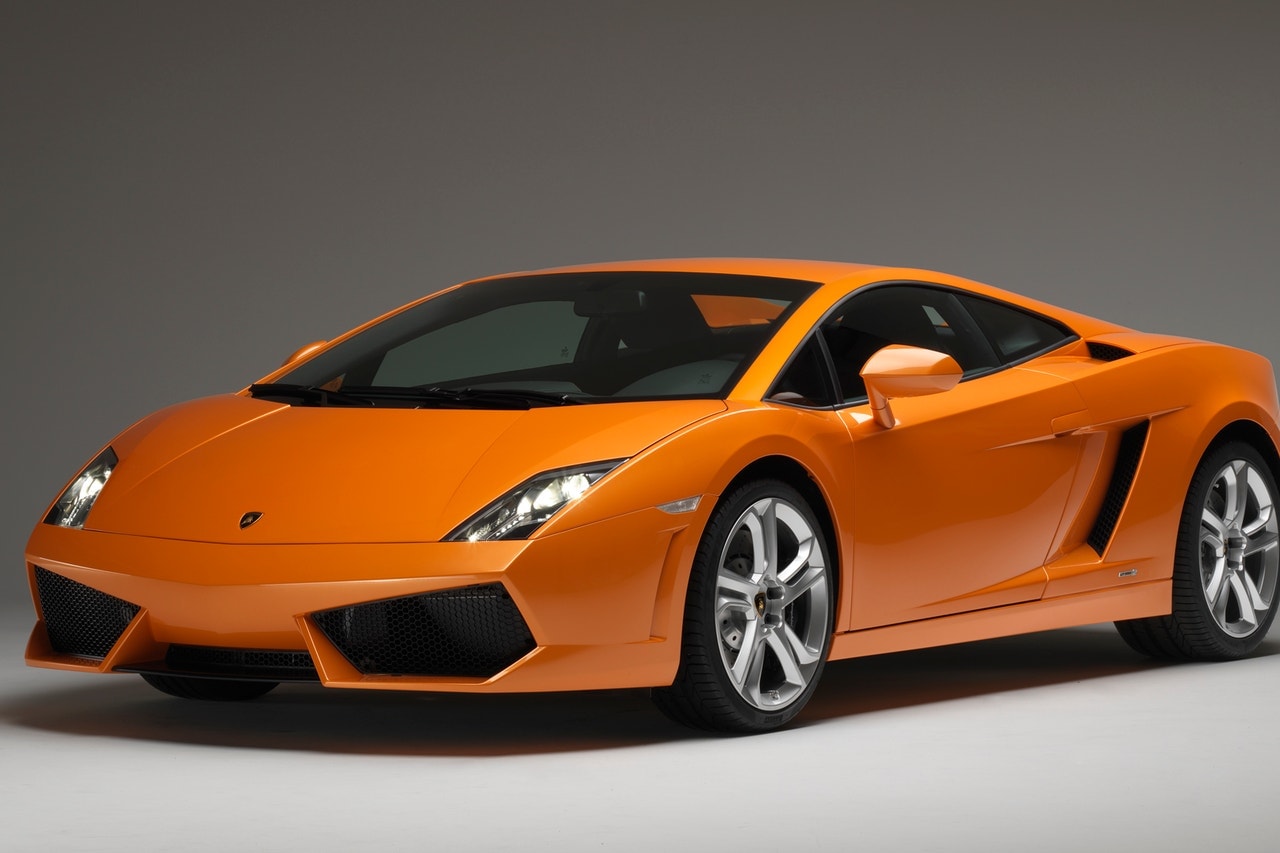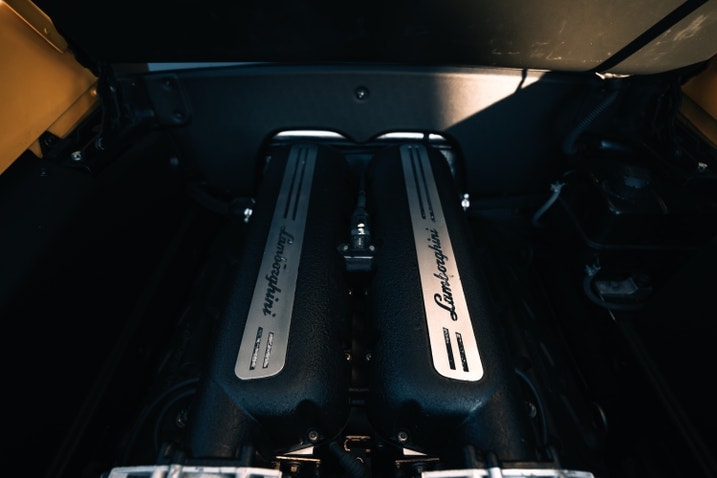- The Lamborghini Gallardo is 20 years old, and until very recently, was always the brand's star child.
- Lambo's Gallardo birthed the V10 that would go on to live in the Huracán.
- The fate of that V10 is in question as engines continue to downsize and hybridize.
Flashback Friday: Looking Back at the First Baby Lamborghini, the Gallardo
We take a look back at the car that shaped some of Lambo's most formative years
The idea of a smaller, more affordable Lamborghini wasn’t a new one when the V10-powered Gallardo was shown to the public at the 2003 Geneva Motor Show. In fact, the idea originated with Ferruccio Lamborghini himself and the ill-fated Urraco. Fast-forward to 1987, and Lamborghini begins the L140 project. The idea was to create another small Lambo. Multiple powertrain options were explored, and by 1998, the engineers at Sant’Agata decided to throw project L140 in the can and start from scratch, borrowing only one idea from it: a V10 engine.
We know how that went. The Gallardo was a hit. In 2024, the future of that now-legendary V10 is in question. Audi, whose R8 shared an engine with the Gallardo and Huracán, isn’t moving forward with the powerplant. In fact, it's recently become more clear that the shared Audi-Lambo V10 is on its way out. That’s why now, the year of the Gallardo’s 20th birthday (if you go by its first model year, not the year it was released), we thought we'd take a look back at the car that helped make Lamborghini what it is today.
The V10 is inseparable from the Gallardo ethos — the Gallardo would likely not be the icon that it is today without it. In other words, the V10 is the Gallardo, and vice versa. The Gallardo’s first V10 was a 5.0-liter cast aluminum alloy unit, with a 90-degree V-shape used to lower the engine’s height. It also lowered the car’s center of gravity and improved rear visibility. This, in conjunction with the Gallardo’s conventional doors, smaller size, and lower price point gave it a reputation as the “usable” Lamborghini. Initially, power was a healthy 500 horsepower — back then 100 horsepower per liter was a lofty figure (and, frankly, it's still impressive to this day). Later outputs rose past 570 horsepower.
Real design work on the Gallardo began in earnest in 2000. Italdesign Giugiaro initially proposed the design, though Lambo’s own Centro Stile and then-boss Luc Donckerwolke made the final revisions. Arguably, the Gallardo and Murcielago’s design from this era began the trend that still informs Lamborghini design today. Big Lamborghinis have always had a distinct wedge shape, but the effort to modernize that design motif was clear in the Gallardo. Since then, Lambo sports cars have all been a modern take on the original wedge-y design with large forward intakes, a set of enormous door inlets, and a square, edgy rear.
In the years following the Gallardo’s initial 2003 launch, Lamborghini continued to bring revisions to both the body and powertrain. The baby Lambo was a massive success, and until the Urus SUV hit 20,000 units produced in June 2022, the brand’s V10 models were always its most popular sellers. 2005 brought a Spyder variant and some light revisions to the V10 powerplant. By 2007, Lamborghini had made 5,000 Gallardos. That same year, the Gallardo Superleggera was introduced, shaving around 45 pounds from the standard Gallardo’s body and upping power to 552 hp.
Until 2009, the Gallardo had always been one thing: all-wheel-drive. The Gallardo LP 550-2 Valentino Balboni, named for the company’s loyal test driver, did away with two driveshafts. Only 250 of these cars were produced, but demand for a rear-driven Gallardo was so strong the LP 550-2 eventually entered series production in 2010. This was later expanded to a Spyder version in 2011. A year earlier, the Gallardo Superleggera was treated to more updates. Now making around 560 horsepower, the Superleggera was lighter by 154 pounds.
That year, on November 25, 2013, the very last Lamborghini Gallardo left Sant’Agata Bolognese. Across a decade, 14,022 cars were made across 32 variants. For many years, it was the most successful Lamborghini of all time. It may not have reached the performance heights of its successor, but it set the tone for the "usable" Lamborghini, and we're glad it's a tradition Lamborghini has decided to carry on with.
Edmunds says
The Huracán's successor is supposedly ditching the legendary V10 that began life in the Gallardo, and we'll sorely miss what has been one of the all-time great internal combustion engines.




 by
by